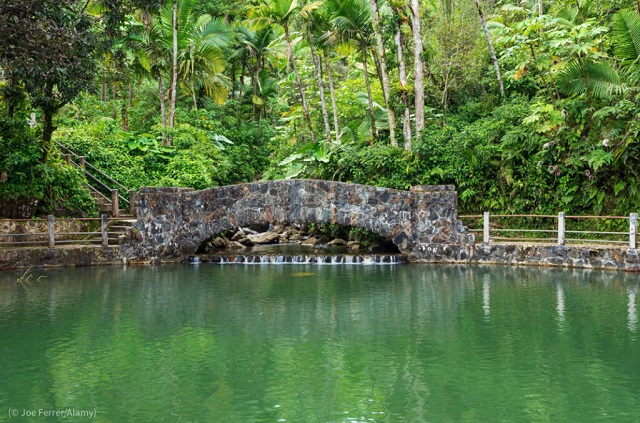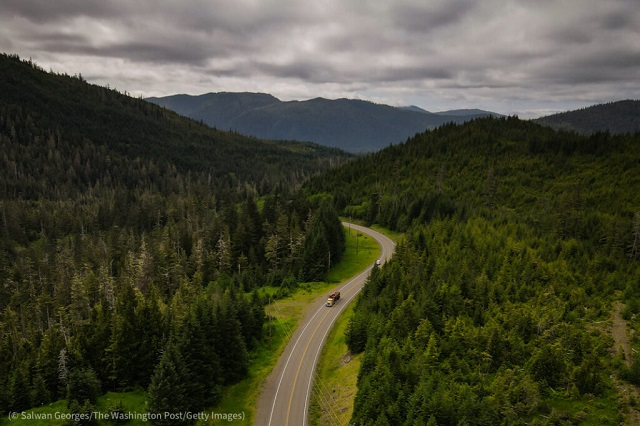When most people think of rainforests, they think of lush, tropical rainforests in places such as the Amazon or the Congo.
But did you know the United States has rainforests, too?
Rainforests are defined as areas with more than 200 centimeters of rainfall per year. While they only make up 6% of land around the world, they are teeming with life and home to more than half of the world’s plant and animal species.
In the United States, several regions experience this level of rainfall and have tropical or temperate rainforests because of it. Find out about four of these rainforests here.
Chugach National Forest
Located in south-central Alaska, Chugach National Forest (above) surrounds a temperate rainforest running between the ocean and the glacial alpine zone.
The Chugach rainforest houses Sitka spruce and mountain and western hemlock trees, as well as moose, bears and bald eagles. More bald eagles live within Chugach National Forest than in the contiguous United States combined.
The Chugach National Forest also has glaciers, rivers and watersheds. Although it is roughly the size of the state of New Hampshire, only 145 kilometers of Forest Service roads run through it, making Chugach among the nation’s best protected forests.
El Yunque National Forest

A bridge spans a stream at the edge of a pool on the Baño de Oro trail in El Yunque National Forest in Puerto Rico in March 2020. (© Joe Ferrer/Alamy)
The only tropical rainforest managed by the U.S. Forest Service is El Yunque National Forest in Puerto Rico.
At roughly 117 square kilometers, it is one of the smallest rainforests in U.S. territory, but it punches above its weight in biodiversity. El Yunque is home to 225 native tree species — 23 of which are found nowhere else in the world — and 164 documented vertebrate species, such as the endangered Puerto Rican parrot.
Parts of El Yunque National Forest receive up to 6 meters of rainfall annually and stay at a balmy 21 degrees Celsius all year.
Hoh Rain Forest

Moss-covered cedar, hemlock, spruce and bigleaf maple trees are pictured in the Hoh Rain Forest September 15, 2021, near Forks, Washington. (© George Rose/Getty Images)
Nestled within the Olympic National Park in Washington state, the Hoh Rain Forest averages 3.5 meters of rainfall per year and is known for its verdant landscape.
Coniferous and deciduous trees make a canopy over sprawling clusters of ferns and soft moss, which drapes over rocks, tree trunks and the forest floor. The thick forest undergrowth allows banana slugs, snakes, snails, salamanders and small rodents to thrive within the ecosystem.
Many elk, black bears, mountain lions, bobcats and otters also call the Hoh Rain Forest home.
Tongass National Forest

Tongass National Forest is shown on Prince of Wales Island, Alaska, July 2, 2021. (© Georges/The Washington Post/Getty Images)
Tongass National Forest in southeastern Alaska is the largest national forest in the United States, with 68 million square kilometers.
The Tongass National Forest is the largest intact temperate rainforest on Earth, comprising old-growth cedar trees, Sitka spruce and western hemlock. It is also home to over 400 species of wildlife — including bald eagles, moose and the world’s greatest concentration of black bears.
Native Alaskans have inhabited the forest for over 10,000 years and still call it home today.
Banner image: Ptarmigan Lake in Chugach National Forest on the Kenai Peninsula of south-central Alaska is shown in June 2021. (© Ray Bulson/Alamy)
The original article is here on ShareAmerica.







COMMENTS0
LEAVE A COMMENT
TOP